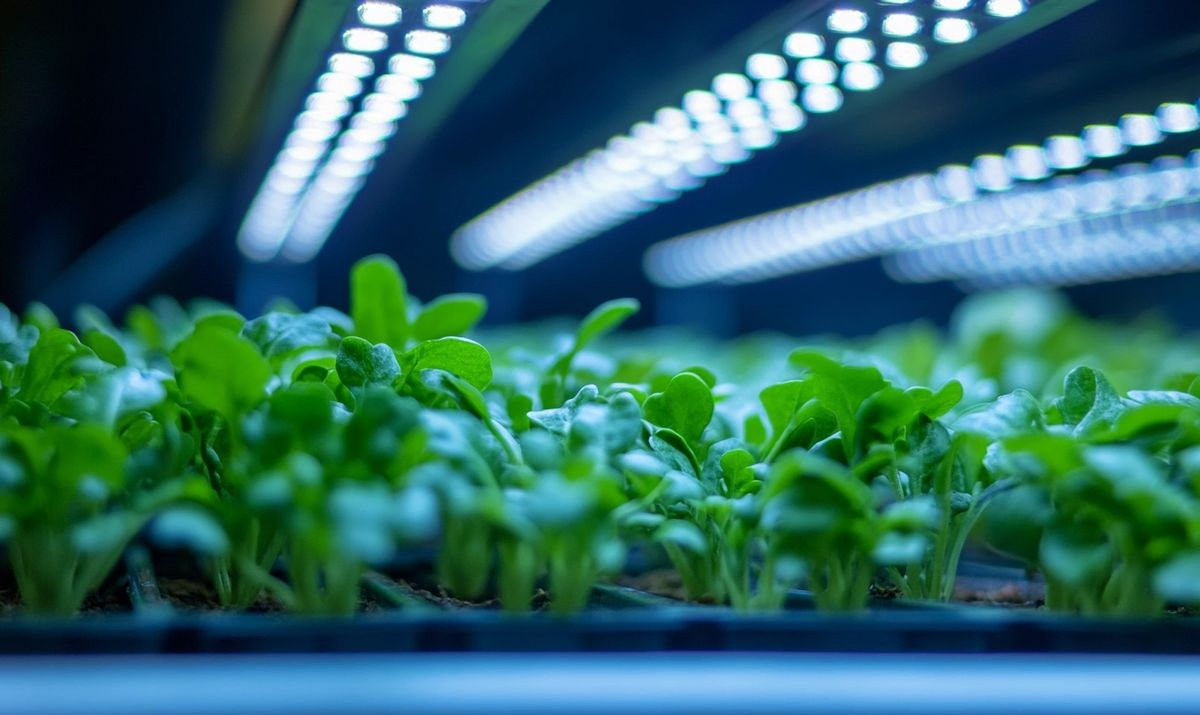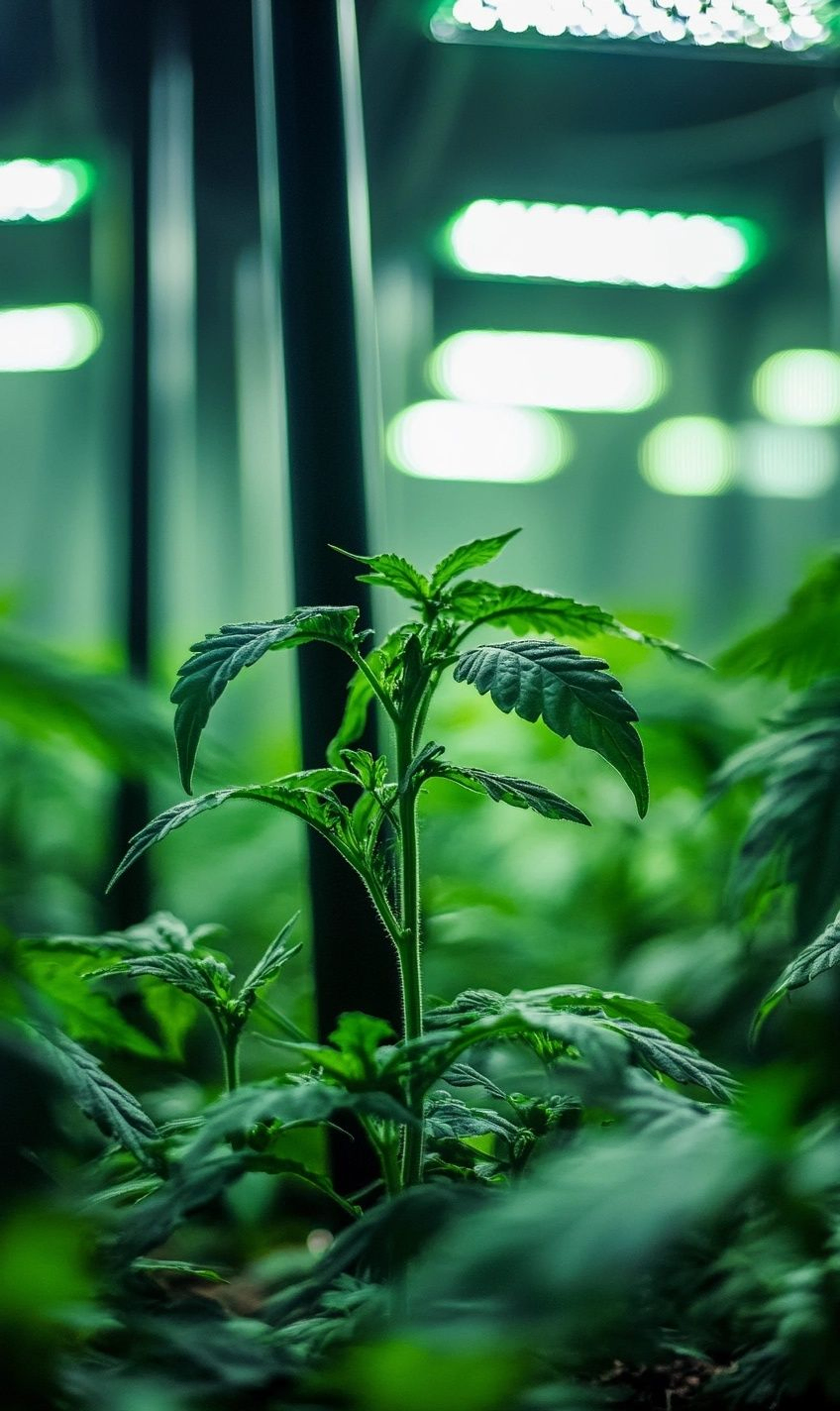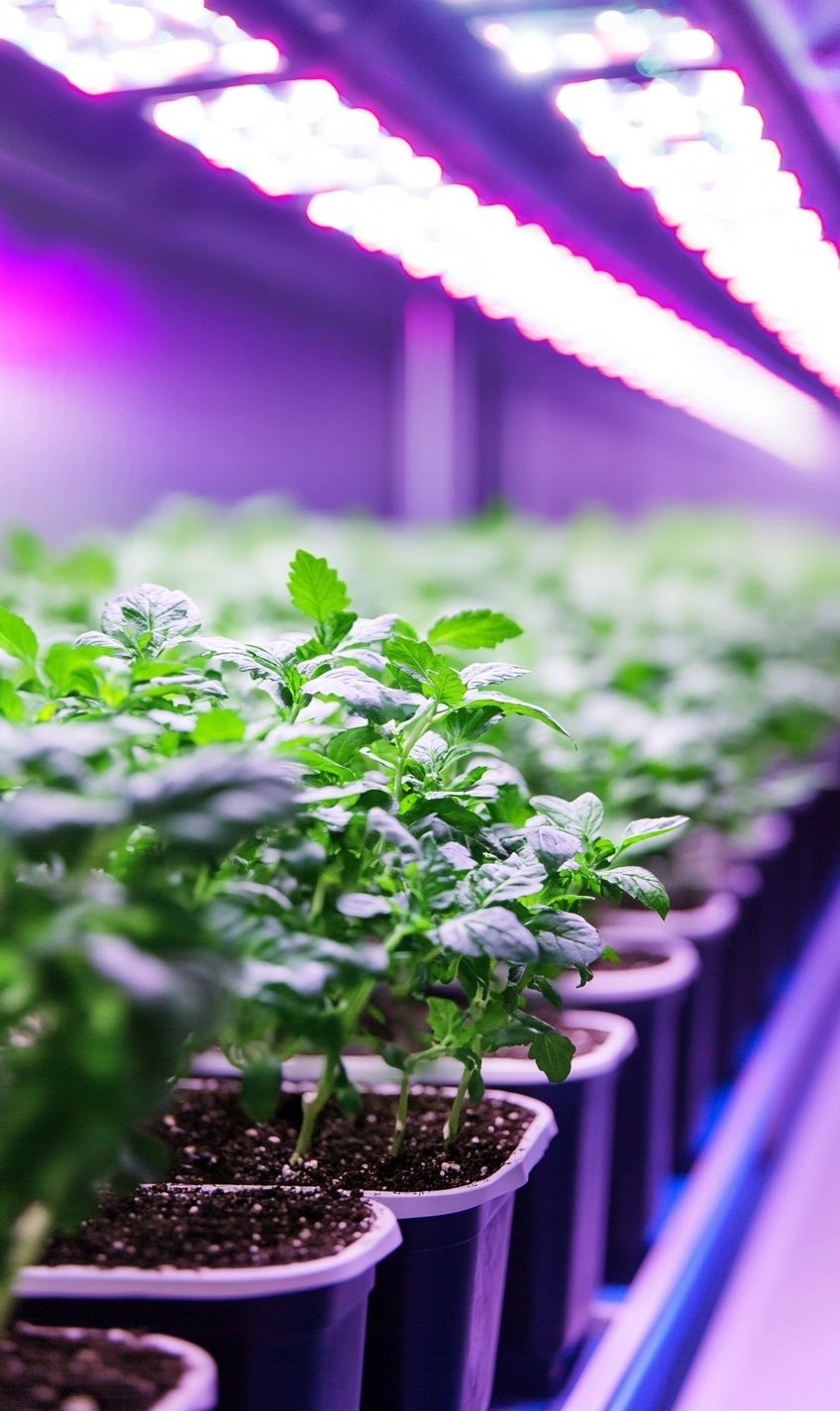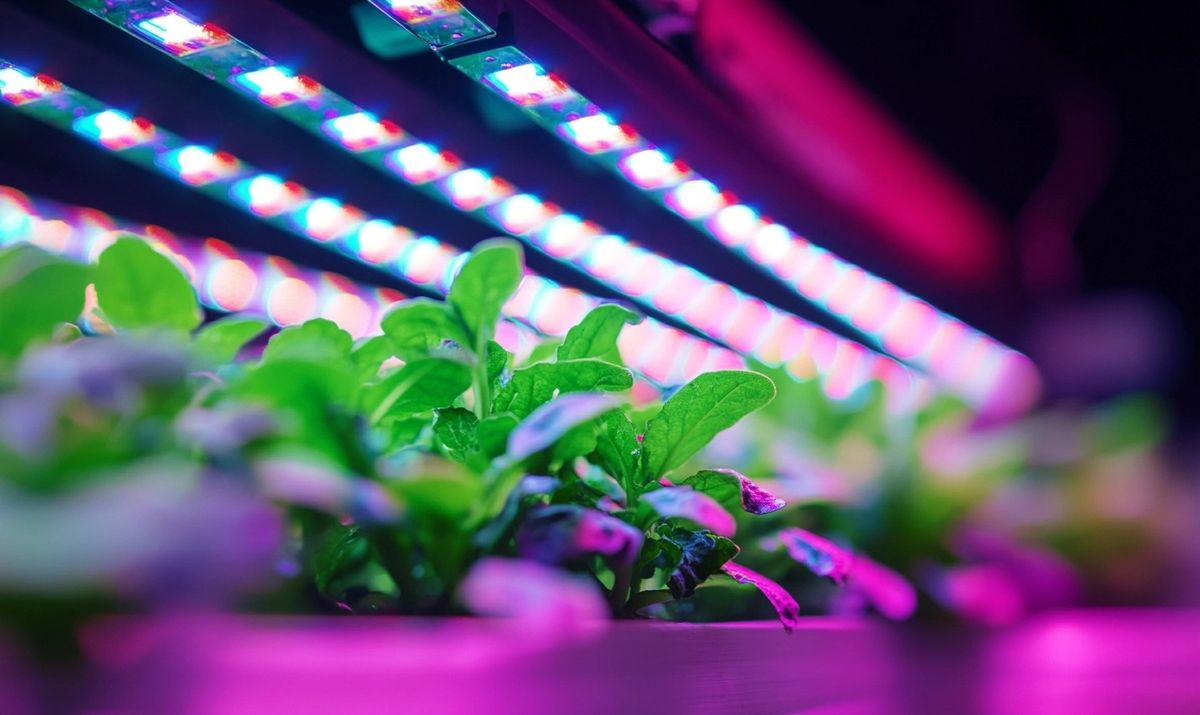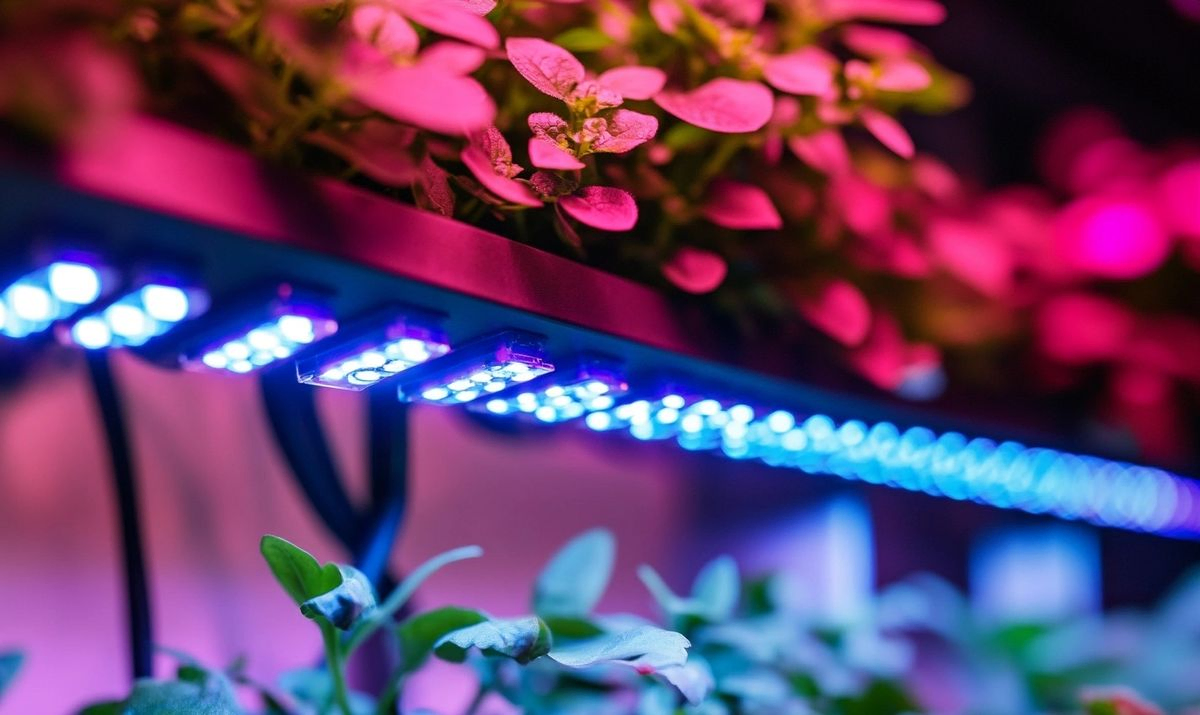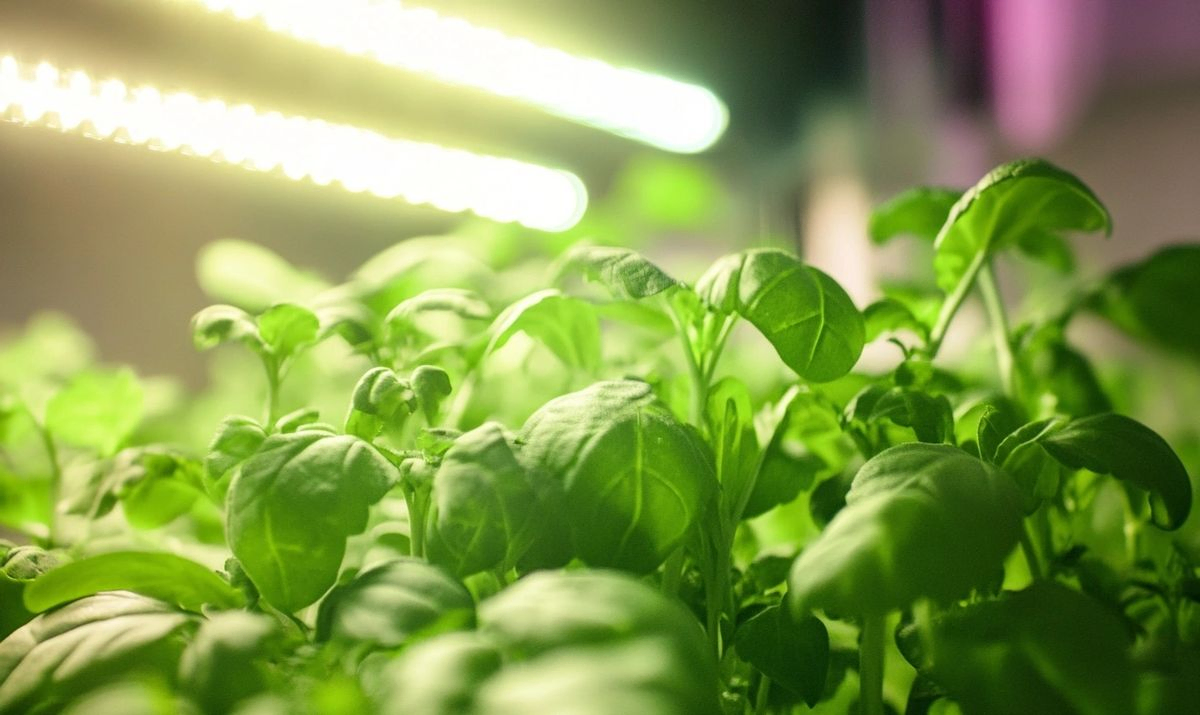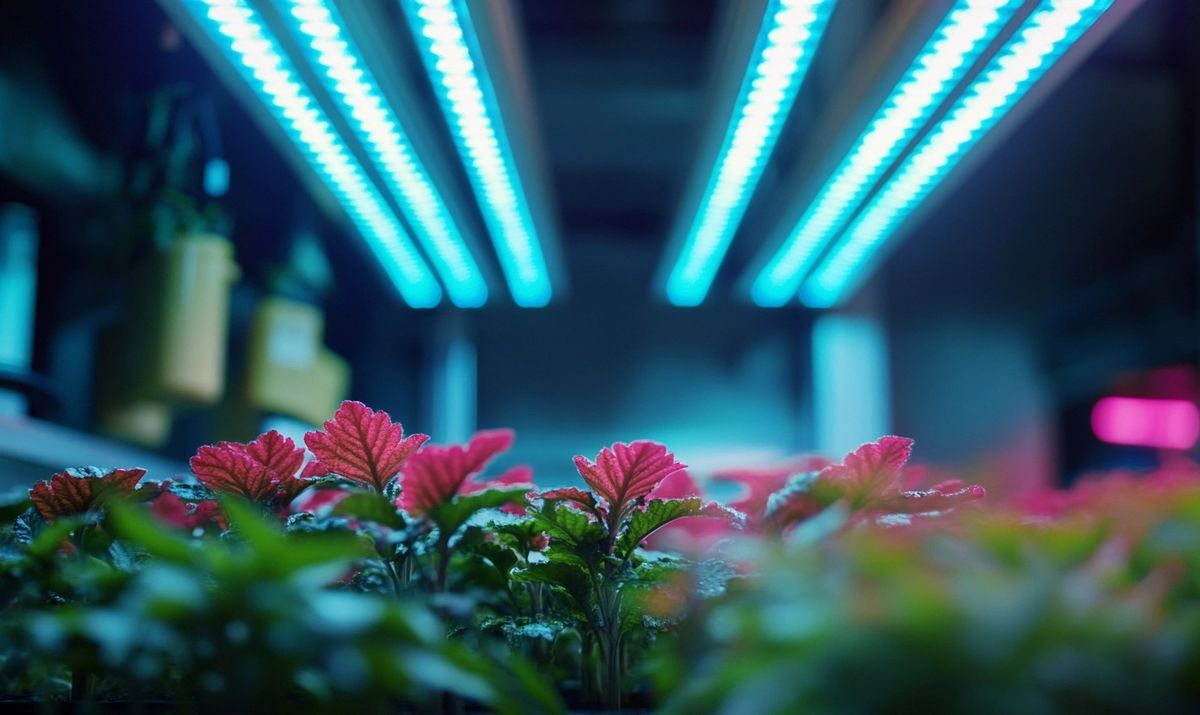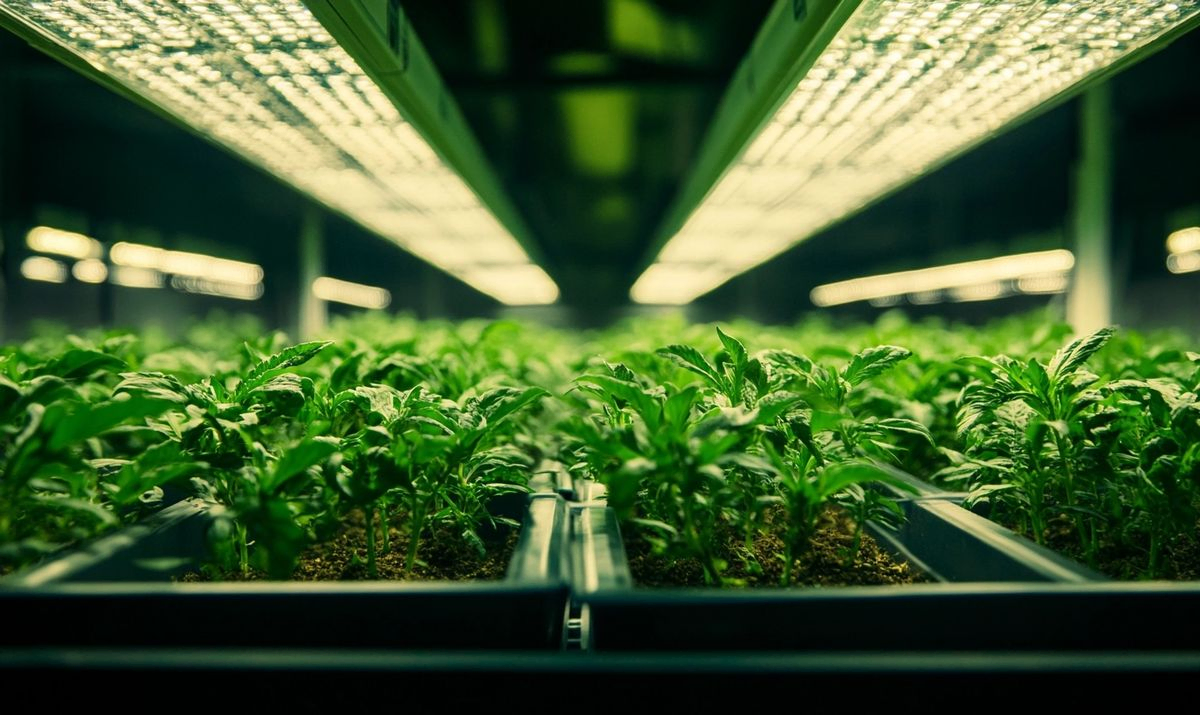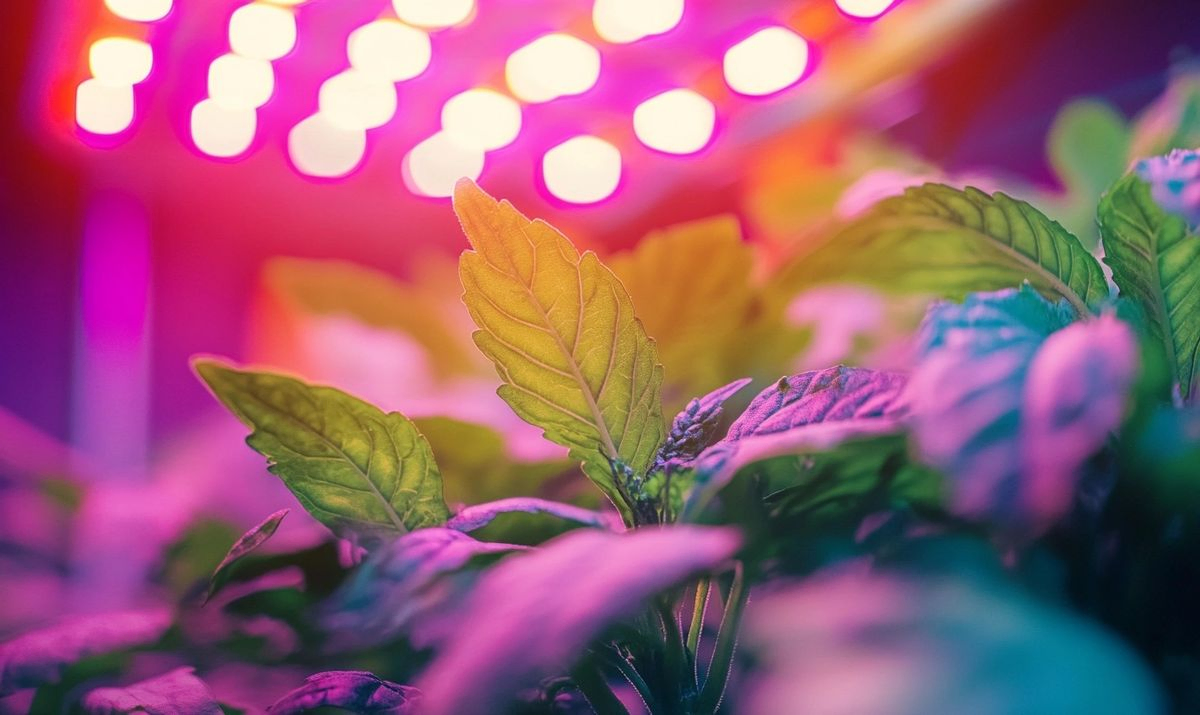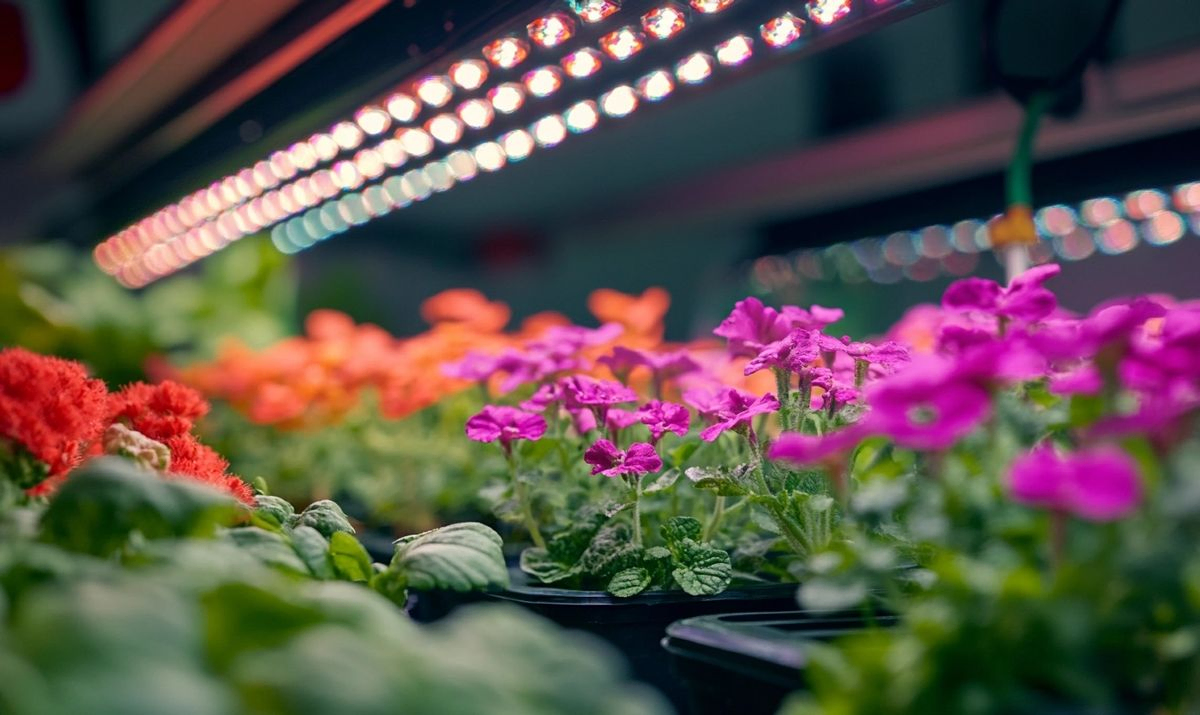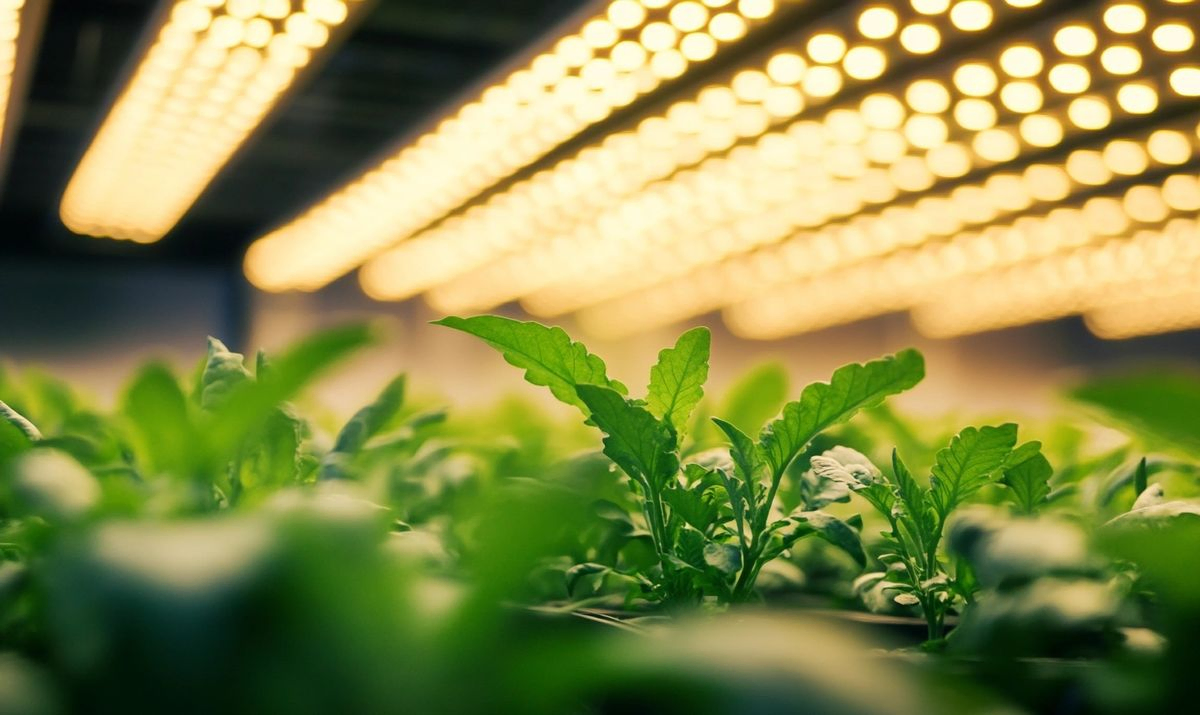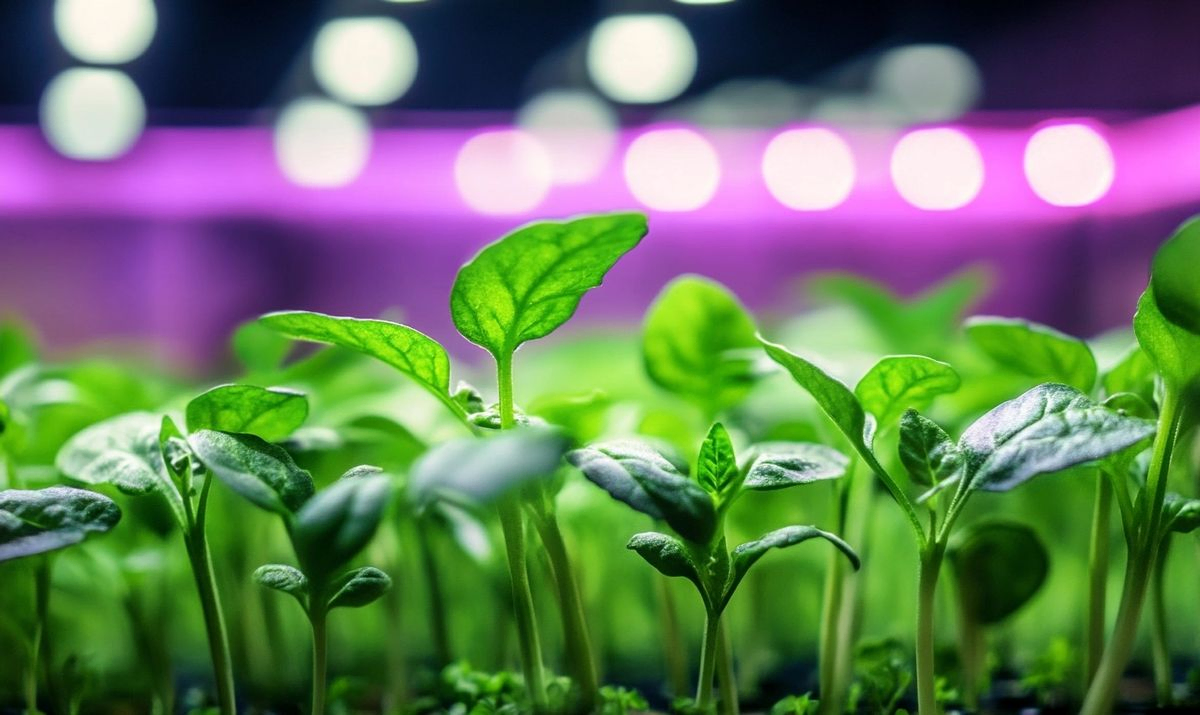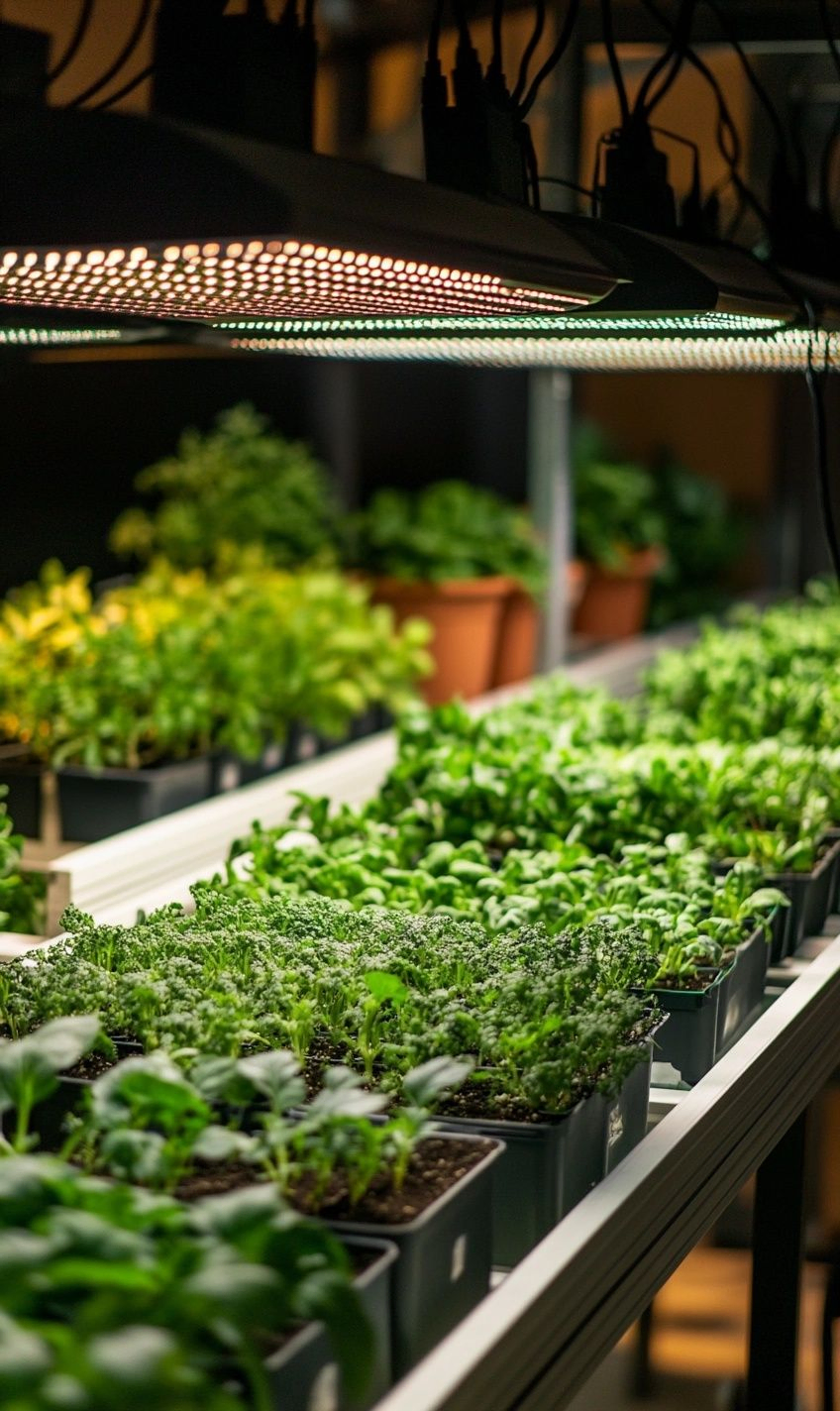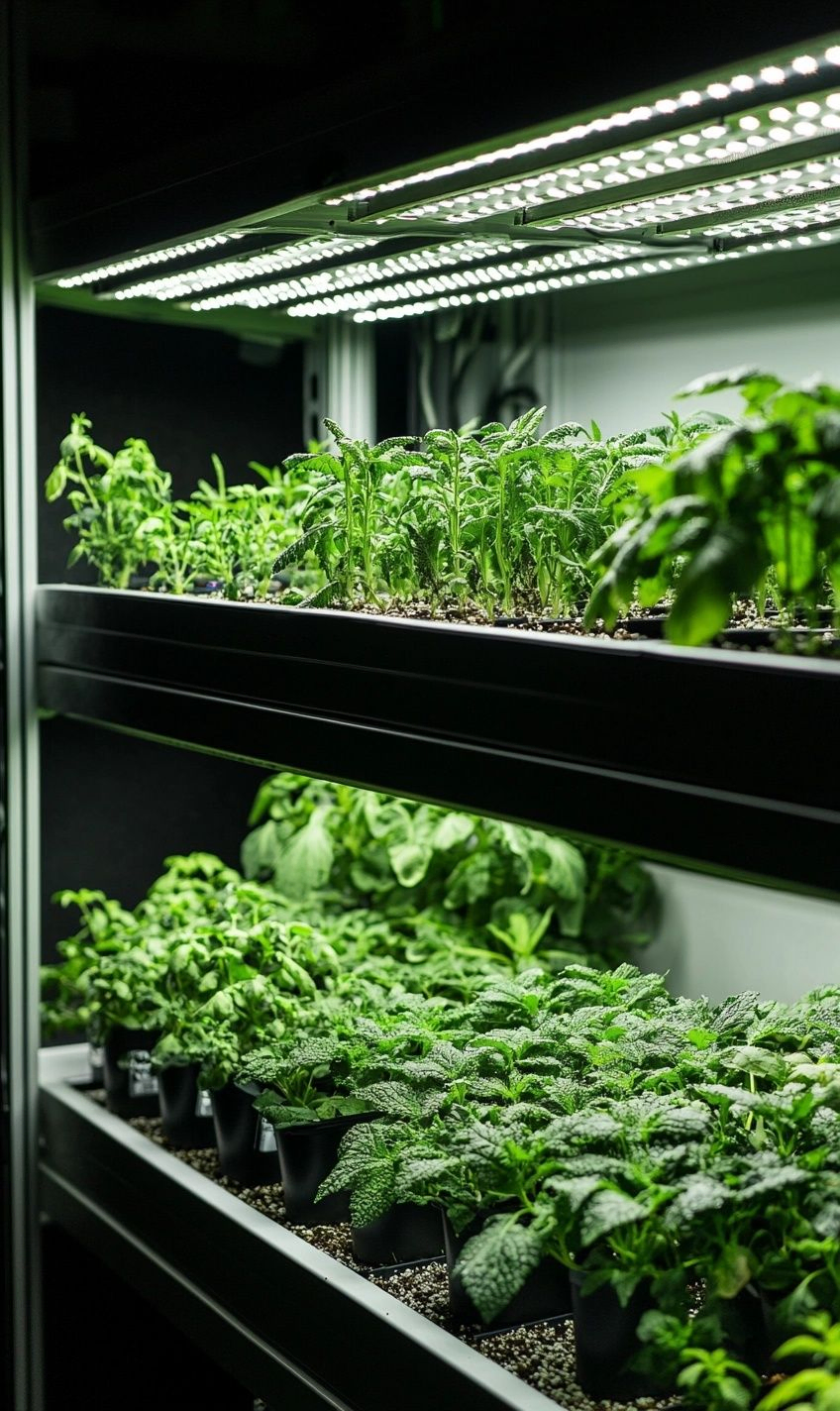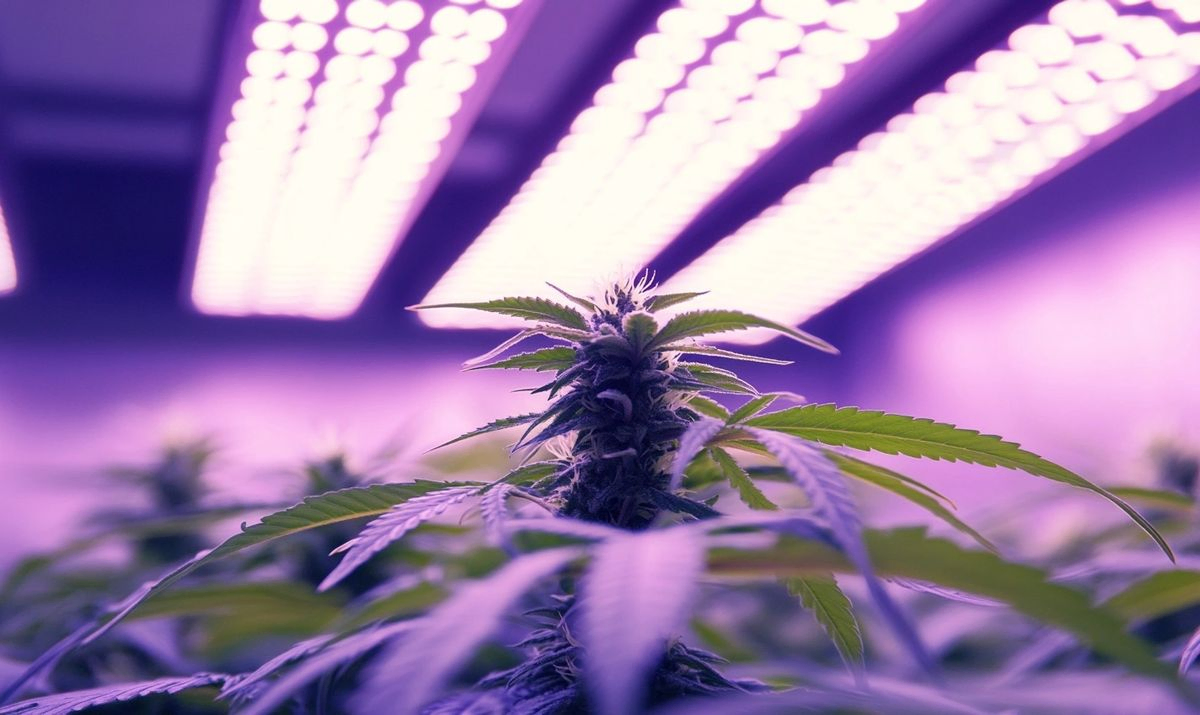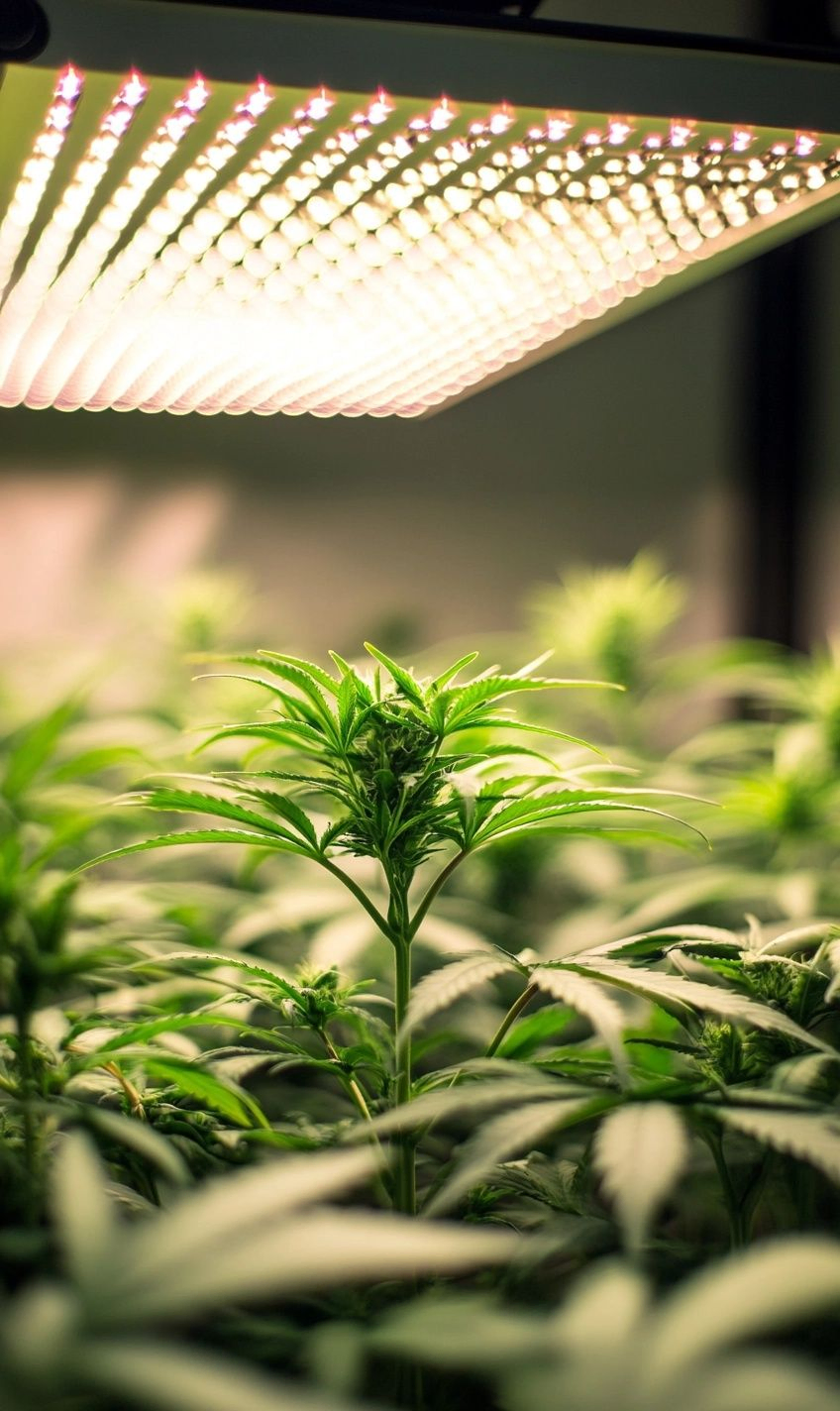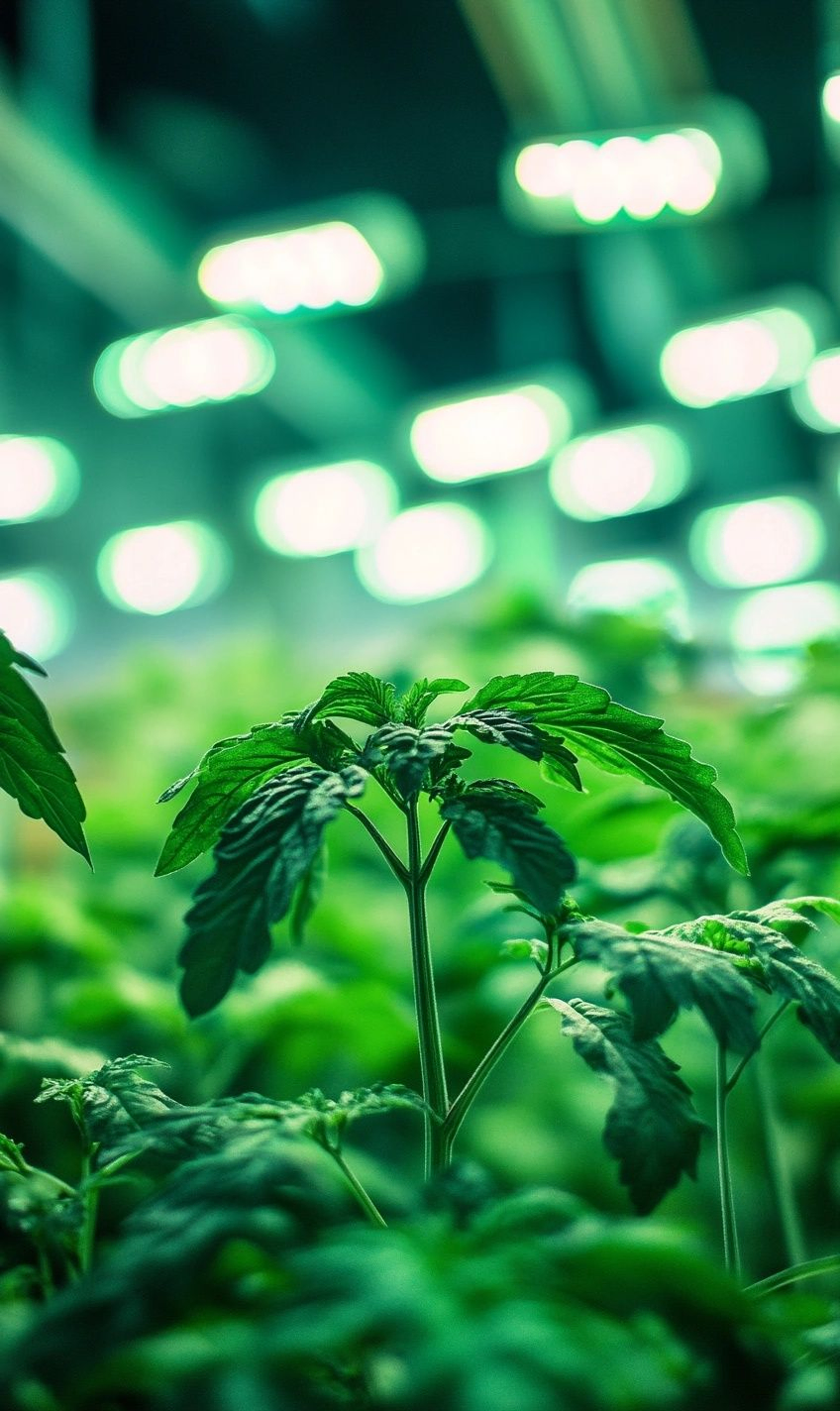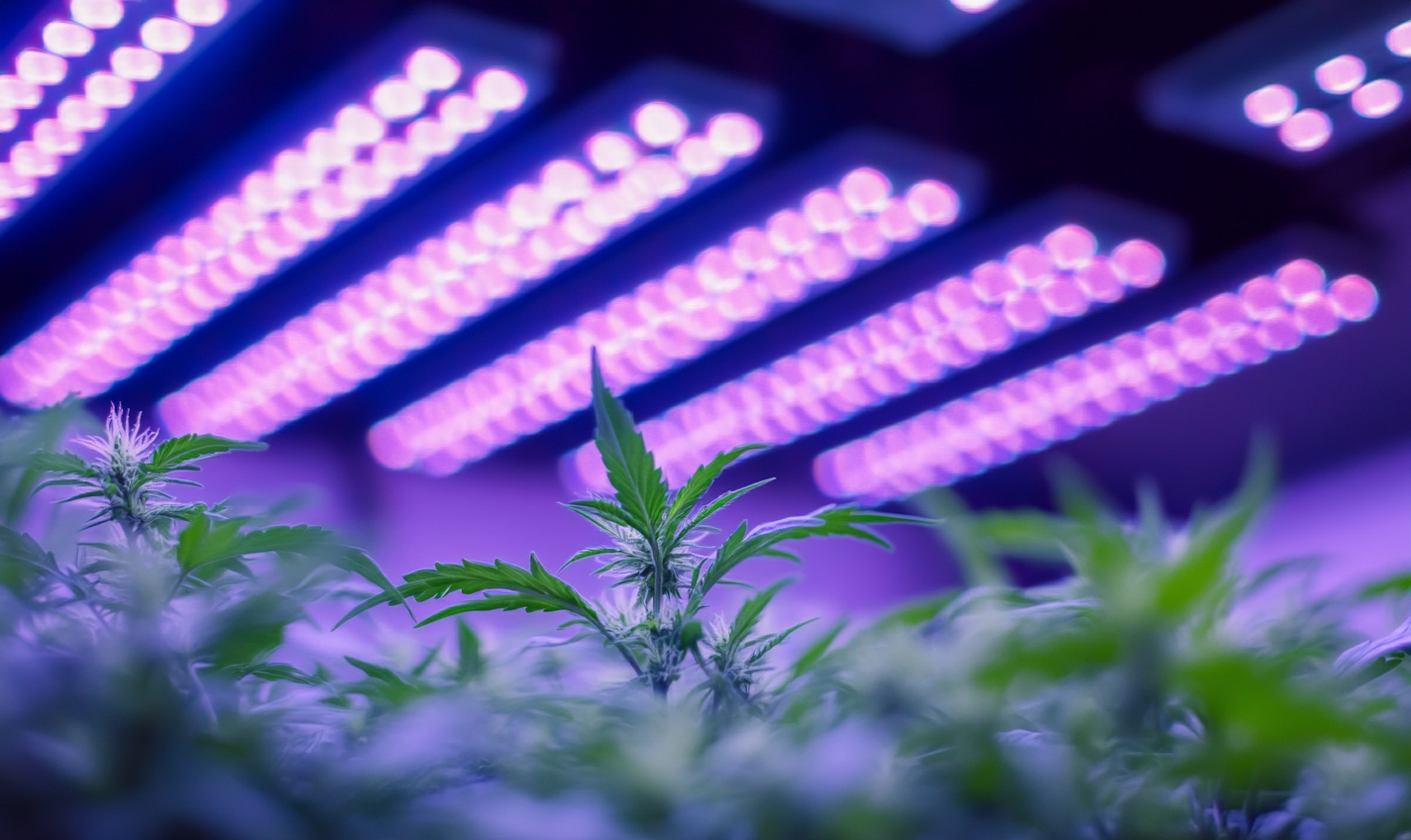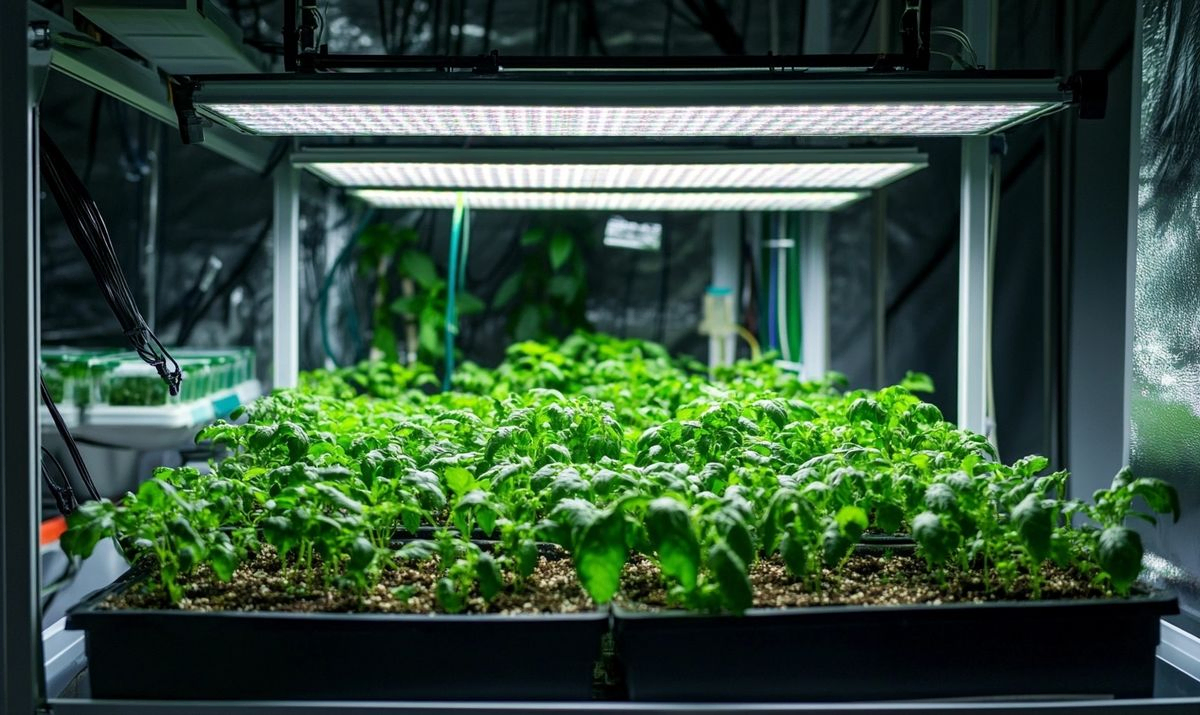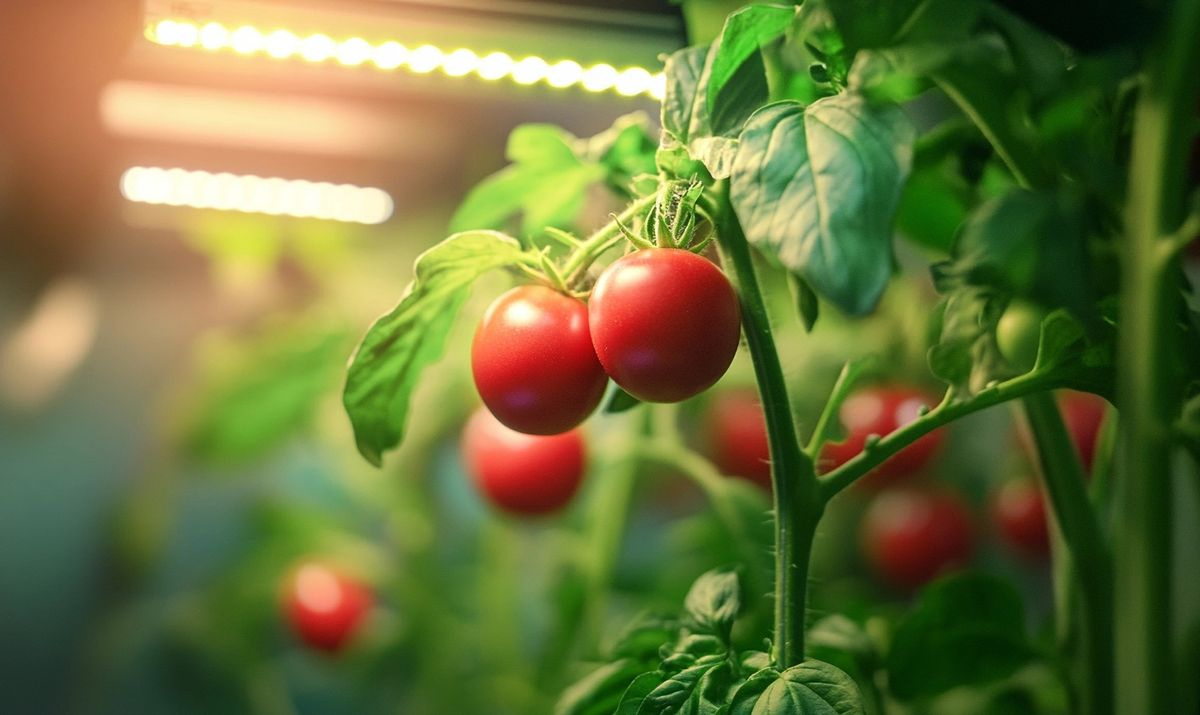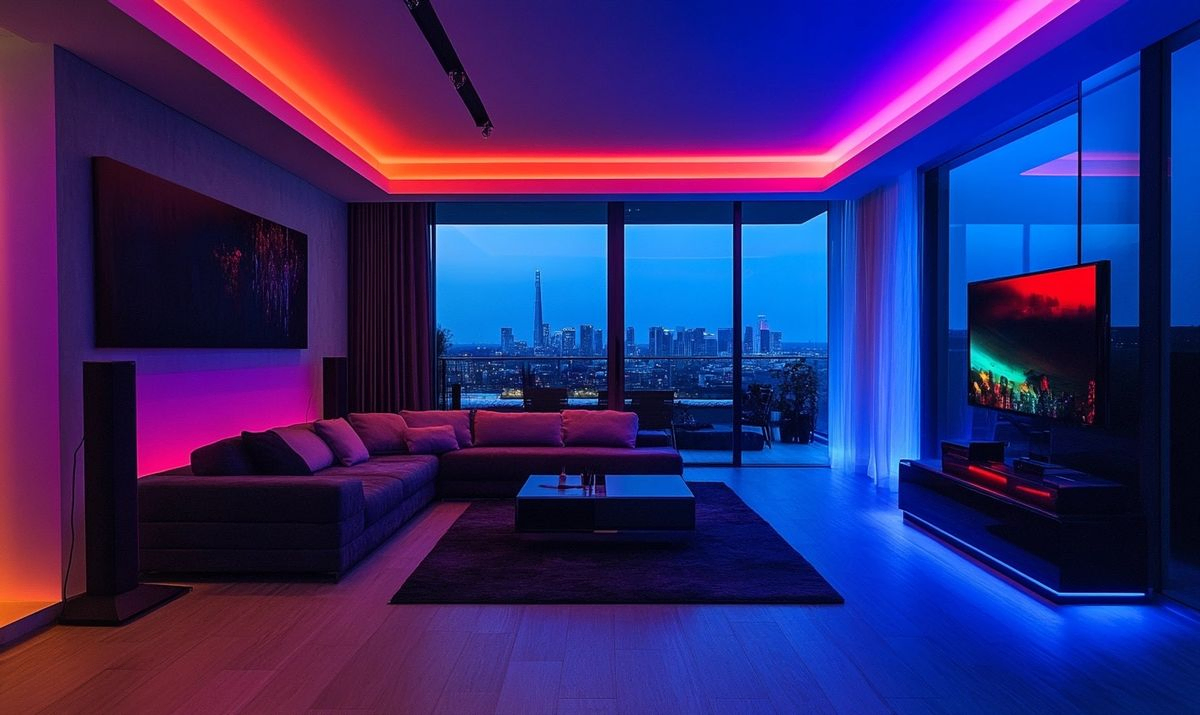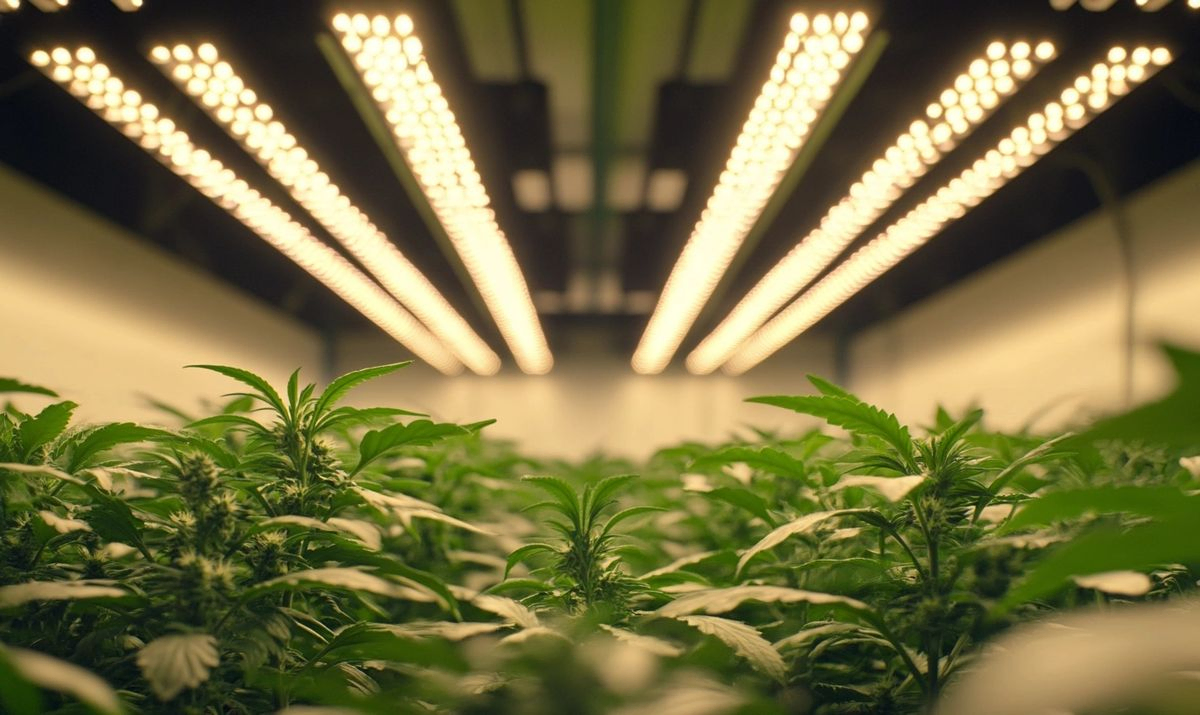With innovations in LED technology and a growing variety of options, the market can feel overwhelming. Each type has unique attributes and benefits, from full-spectrum lights for versatile plant growth to specialized fixtures that cater to specific plant needs. As you navigate this labyrinth of choices, understanding your plants’ requirements, the space you have, and your budget will help you make an informed decision.
This guide will explore the essentials of selecting the perfect LED grow light for your unique gardening environment. Armed with the right, each type has unique attributes and benefits; you’ll unveil a world of possibilities that can take your indoor garden to the next level and foster light conditions.
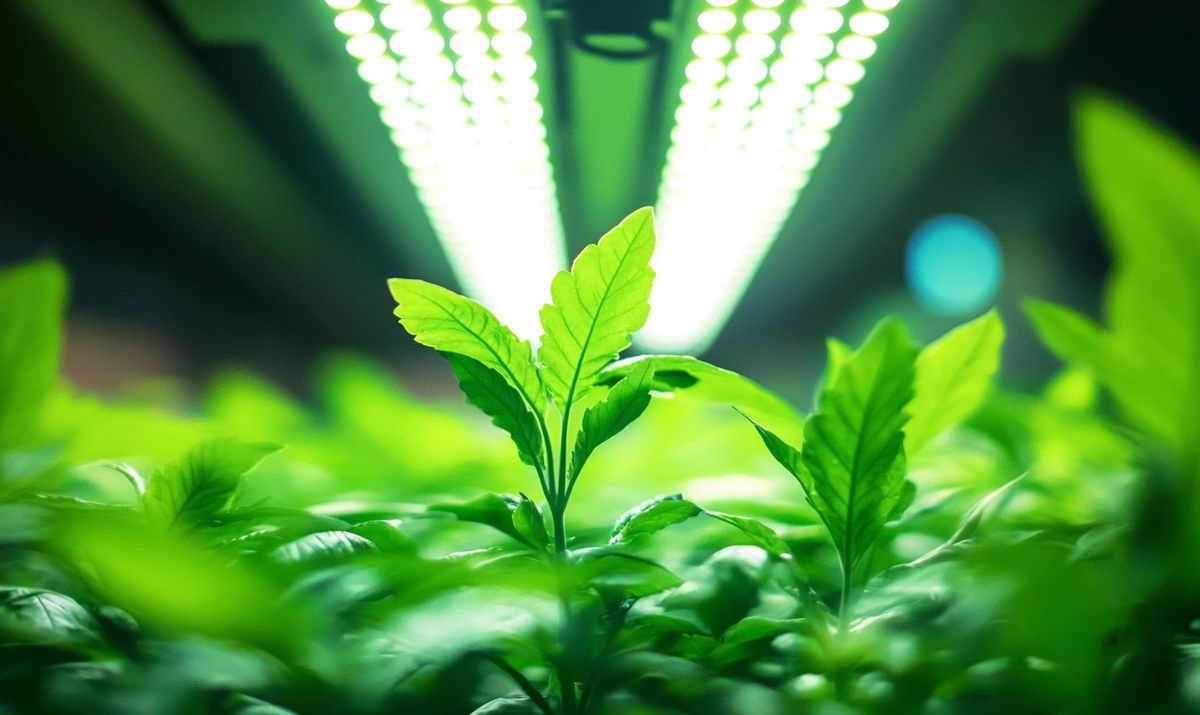
Understanding LED Grow Light Types
Types of LED Grow Lights
The variety can feel like a maze when choosing LED to grow lights. So, how do you navigate through these options? Let’s break it down!
The most common types include:
- Full-Spectrum Lights: Perfect for all growth stages.
- Vegetative Lights: Great for leafy greens and young plants.
- Flowering Lights: Designed to boost blooms and yield.
Best for Beginners
Full-spectrum lights might be your best bet if you’re starting. They mimic sunlight, making plant care a breeze. Imagine the sun shining down on your plants daily without the hassle of moving them around!
Specialized Options
But what about specialized lights? They serve specific purposes. For instance, if you’re growing orchids, you might want a light that enhances reds and blues. It’s like giving your plants a tailored suit to shine in!
Finding the Right Fit for Your Needs
How do you choose what kind of LED grow light to use? Start by assessing your plants’ needs. Are they sprouting, flowering, or just hanging out? Each stage has its light requirements.
Additionally, consider your space:
- Small Spaces: Opt for compact lights.
- Extensive Gardens: You’ll need something more powerful.
And let’s face it, no one wants to deal with a light that overheats. That’s just asking for a garden disaster! Look for lights with good heat management — they’ll relieve stress and keep your plants thriving.
The Right Price Point
Budget is always a consideration. But cheaper doesn’t mean better! Think of LED grow lights as investments; you want long-lasting, efficient options that won’t burn your wallet each month with energy costs.
In the end, pay attention to customer reviews. Fellow growers often share insights that can steer you in the right direction. It’s like having a gardening buddy who’s been down that road!
Key Factors to Consider in LED Grow Lights
Light Intensity Matters
Intensity is vital when you choose what kind of LED grow light to use. It’s like the sun: not enough light, and your plants droop. Too much, and they can get stressed. You want to aim for that sweet spot where your plants thrive. A good rule of thumb is 30-50 watts per square foot. This helps you avoid that sunburnt leaf look!
What About the Spectrum?
Let’s chat about the light spectrum. Plants, just like us, respond to different colors of light. You wouldn’t wear a sun hat in the winter, right? Plants need both blue and red lights during various growth stages. Blue supports leafy growth, while red helps with flowering. Think of it as tailoring their light wardrobe!
Energy Efficiency Counts
Wattage isn’t just a number; it’s a lifestyle choice. More wattage often means higher electricity bills. That said, energy-efficient lights can save you money in the long run. Look for LEDs with higher luminosity per watt. This is like finding the most fuel-efficient car; it’ll get you further for less!
Size of Your Grow Area
Do you have a sprawling basement or just a cozy closet? The size of your grow area will determine what kind of LED grow lights you need. Measure your space! A good rule of thumb is to cover about 1 square meter per light fixture for optimal growth.
Heat Management
Picture this: your plants chilling under sunny lights, and suddenly, it feels like a sauna. That’s terrible news! Heat management keeps your plants happy. Look for lights with built-in cooling features. Better heat dissipation means happier plants. It’s a win-win!
Your Budget
Let’s face it; we all have budget constraints. But remember, this is an investment. You don’t want to skimp on quality—your green friends rely on you! Set a reasonable budget, but don’t forget to include operational costs like electricity. Think of it as feeding your hobby instead of a chore!
Durability and Lifespan
Last but not least, check how long the lights earlier. Cheap lights might save you a buck now but could leave you in the dark later. Look for lights with good durability reviews; they should last for years. Make your purchase count!
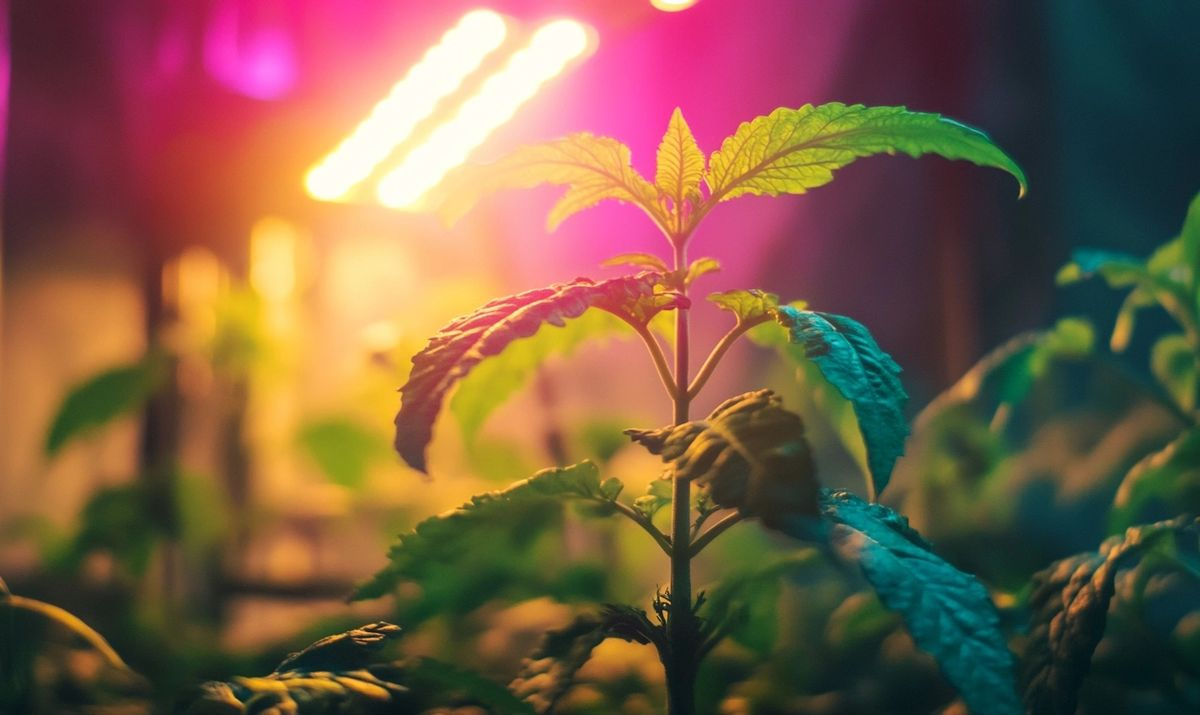
Assessing the Size of Your Grow Space
Determine Your Growing Area
When considering LED grow lights, your growing space is the first thing to pin down. Are you managing a cozy corner in your living room, a dedicated grow tent, or an entire room? Understanding how much space you have is vital. It’s like trying to fit a vast sofa into a tiny apartment; without measuring, chaos reigns!
Measure It Out!
Grab that measuring tape! Know the dimensions of your space—width, width, and height. Once you have the numbers, calculate the total square footage. This gives you an idea of how many plants you can fit and how powerful your LED grow light will be. A simple formula:
- LenWidth Width = Square Footage
- Then, think about plant spacing; give each plant some personal space!
Ceilinvastight Matters
Ever heard the phrase, “The sky’s the limit”? Well, in gardening, it could also be your ceiling height! Your lights should be adjustable if you’re going up instead of out. High ceilings? That means you can use taller grow lights or even multiple layers! If your space is cramped, consider low-profile lights that won’t crowd your plants.
How Many Plants Are You Gro, wing?
Do you plan to grow a jungle or just a few herbs? The number of plants impacts the type of LED grow light you need. Below is a quick guide:
- 1-4 plants: A small, low-wattage light will do.
- 5-12 plants: Medium wattage, possibly a full-spectrum light.
- 12+ plants: You’ll need a high-output light to cover more ground.
Shining a Light on Coverage Area
Each LED grit has a specific coverage area. Make sure to check the light specifications. Some lights are made for small areas, while others are powerful enough for large spaces. It’s like choosing between a flashlight and a stadium floodlight! Aim for even light distribution to keep every plant happy and healthy.
In your journey to discover how to choose what kind of LED grow light to use, don’t forget to assess your grow space first. It’s the foundation for all your plant growth adventures!
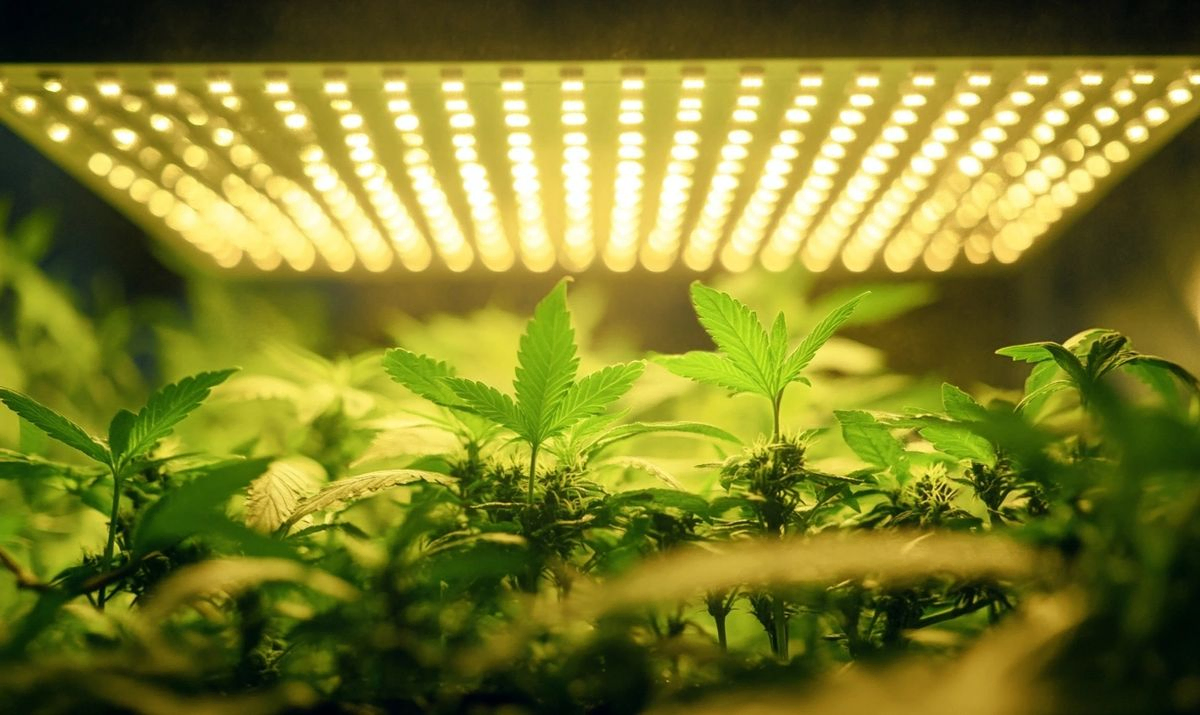
Light Spectrum and Its Importance for Plant Growth
Understanding the light spectrum is vital when considering LED grow lights. Think of light as music with different wavelengths, playing various tunes that your plants can dance to. Each plant has its favorite melody that encourages growth, blooms, and fruit production. But how do you know which wavelength your beloved greens crave?
The Colors of Light
Plants primarily use blue and red light. Blue light (400-500 nm) helps with vegetative growth. Want your plants to grow tall and strong? Blue’s got your back! On the other hand, critical light (600-700 nm) is like the secret sauce for flowering and fruiting stages. So, it’s vital to mix these light zones well. You wouldn’t serve a plate of mashed potatoes at dinner, right?
- Blue Light: Good for leaf growth.
- Red Light: Promotes flowering and fruiting.
- Green Light: Affects photosynthesis but is less utilized.
Full Spectrum vs. Limited Spectrum
When you choose what LED grow light to use, ask yourself: do you want the whole spectrum or just one part? A full-spectrum light mimics sunlight and is versatile for different plant stages. Have you limited spectrum lights? They’re specifically designed for either foliage or flowering.
Consider some of the benefits:
- All-in-one solution with full spectrum.
- Specific targeting with a limited spectrum for budding.
The Balance of Intensity
Next, there’s intensity. You wouldn’t want to blind your plants with too much light. It’s about finding the sweet spot. The intensity affects how well your plants absorb those critical wavelengths. Consider this when figuring out what kind of LED grow light to use. A good rule of thumb: keep lights between 12-24 inches above your plants. They’ll tell you if it’s too hot to hana dle!
So, what’s the takeaway here? Start with understanding your plants’ needs and then layer on that beautiful light spectrum. The right combination helps pave the way for lush, thriving plants and bountiful harvests. And remember, your plants are counting on this. Consider this or their success!
Energy Efficiency in LED Grow Lights
What Does Wattage Mean for You?
Wattage might sound technical, but it’s a crucial factor. Think of wattage like the energy appetite of your LED grow light. It indicates how much power the light uses. A higher wattage usually means more intensity, but that doesn’t always mean better! Too much power can lead to higher bills. Who wants that?
Balancing Power and Cost
Consider your budget when choosing what kind of LED grow light to use. Here’s a little trick: divide the total wattage of the light by the square footage of your grow space. This gives you a straightforward figure to see if the light is efficient enough for your needs. For example:
- 100-Watt LED light for a 4×4 ft area = 6.25 watts per sq ft
- 200-Watt LED light for a 4×4 ft area = 12.5 watts per sq ft
So, what’s ideal? Generally, aim for about 20 to 30 watts per square foot for healthy plant growth.
Energy Efficiency Matters
Energy efficiency isn’t just a buzzword; it’s a wise investment. You’ll want LED lights that give you the biggest bang for your buck. And this means looking for lights with a higher lumens-to-watts ratio. More lumens for less wattage? Yes, please! Brands like Samsung and Cree are known for their efficiency.
Do the Math on Savings
Wondering how LED lights can save you cash? Consider this: A typical 100-watt LED grow light can replace a 250-watt HID light. The savings on your electricity bill can be staggering! Here’s a quick breakdown:
- 100-watt LED light consumes around $12 of energy a month.
- 250-watt HID light can cost around $30 monthly.
Lumens-to-watts every month just by upgrading your lights! Imagine what you could do with that cash.
The Right Fit for Your Plants
You should also assess how your plants react to different wattages. Some love the low-light vibe, while others thrive under intense beams. So, take your time! Consider your plants ‘ needs when determining what kind of LED grow light to use. Your grow setup will thank you!
Comparing Full-Spectrum vs. Specialized LED Lights
What’s Your Plant’s Flavor?
When diving into the world of LED grow lights, you often hear about full-spectrum and specialized lights. Think of full-spectrum lights as a buffet. They offer a wide range of light wavelengths, perfect for just about any plant. Specialized lights are like a gourmet meal tailored to specific veggies or flowers. Which one should you grab?
Know Your Grow Goals
First things first, what’s the primary goal? Are you aiming for leafy greens or vibrant flowers? Here’s the breakdown:
- Full-spectrum is excellent for general growth. Veggies, herbs, and even some fruit plants thrive under these. They mimic natural sunlight, making your plants feel right at home.
- Specialized: These lights are perfect for focused growth phases. If you’re flowering or fruiting specific plants, they will get what they crave.
Energy Needs and Efficiency
Next, consider energy efficiency. Full-spectrum lights often use more watts but can cover a broader range of plants. Specialized lights might require less energy and be more efficient for targeted plants. It’s like comparing a mini-van to a sports car; both have perks, but one isn’t necessarily better.
Heat Output Matters
Have you ever walked past a grow tent and felt the warmth radiating? Heat management is vital! Full-spectrum lights can emit more heat, meaning you might need extra cooling systems. Conversely, specialized lights usually run cooler, helping you avoid hot flashes.
Finding Your Sweet Spot
Here’s the thing: budget. Full-spectrum lights often come at a higher upfront cost, but they commodate various plants. Specialized li are less pricey. Buy a female young with those savings; you might even snag a plant or two!
Your Plant, Your Choice
Ultimately, it’s about what vibe you want to create in your growing space. Please take a moment to conversely say what my plants need. Will they thrive under varied light, or is it time to treat them to a specialized setup?
Lighting can make your plants feel like they are basking in a warm sunbeam or provide a focused spotlight. Embrace your inner gardener and let that grow light be the guiding star for your leafy friends!
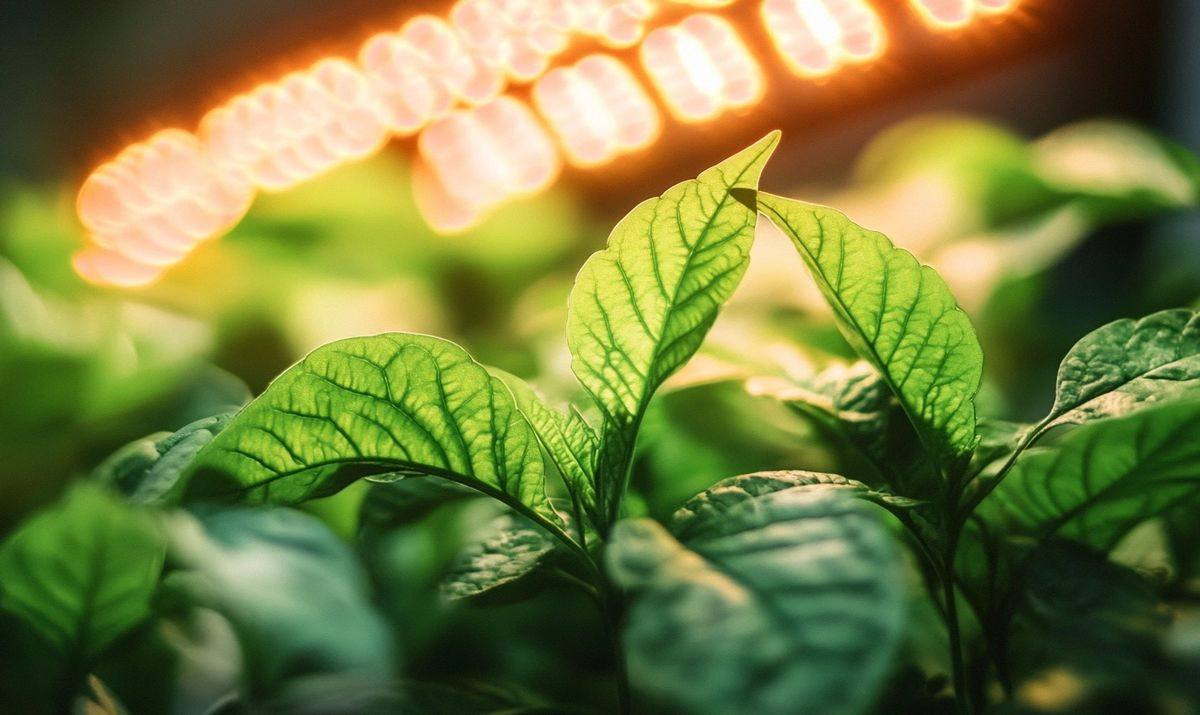
Heat Management and Its Role in LED Grow Light Selection
Why Heat Matters in Your Grow Space
When shopping for LED grow lights, it’s easy to get lost in color spectrums and wattage. But let’s not forget about heat management. Just like we feel uncomfortable in hot weather, plants can suffer t stress, too. An overheated grow standardizes your leafy friends and hinders their growth.
Types of Heat Generation in LED Lights
LED grow lights are generally more efficient than traditional ones but still produce some heat. There are two main types of heat generation to consider:
- Active Heat: This comes from components like drivers and chips. Too much active heat can lead to overheating.
- Ambient Heat: The heat in your growing space affects the air and surrounding plants.
How to Handle Heat Like a Pro
So, how can you choose what LED grow light to use without risking burning your plants? Here are some pointers:
- Look for lights on lights but cooling. These help disperse heat, keeping the lights cool and your plants happy.
- Consider the distance. Make sure there’s enough space between your lights and plants. This allows heat to dissipate, pThecorch.
- Ventilation is key. A ventilated grow space can prevent heat buildup, like letting fresh air into a stuffy room.
Recommended Products and Their Heat Ratings
To make your LED grow light choice easier, check out these popular types along with their heat ratings:
| Light Type | Heat Rating |
|---|---|
| Full-Spectrum LEDs | Low |
| Cob LEDs | Moderate |
| Quantum Board LEDs | Very Low |
Knowing the heat levels of your chosen LEDs plays a significant role in ensuring your plants thrive. After all, they deserve the best, don’t they? Your love for growing will shine when you select the proper lighting with heat management in mind. By following these tips, you’re not just investing in better lights; you’re investing in happy, healthy plants!
Budgeting for Your LED Grow Light Investment
Understanding Your Needs
When picking the right LED to grow light, ask yourself: what do I need? Are you a hobbyist or want to grow a small garden? Your budget should reflect your goals.
Calculating Initial Costs
Costs can vary wideproperere are some questions to guide you:
- What type of plants do I want to grow?
- How ample is my growing space?
- Do I need additional equipment like reflectors or timers?
For example, essential LED lights can start around $50, while high-end lights may reach $500 or more. It’s all about balance. You don’t want to do something that might affect your plant health.
Long-Term Budgeting
But don’t forget about long-term costs! Here’s where energy efficiency comes into play. A high initial investment in efficient LED lights can save you money. Think of it like buying a car that gets excellent gas mileage—in the long run, it pays off.
Consider these long-term factors:
1. Electricity costs – Does the light consume a lot of energy?
2. Replacement costs – How long will the light last?
3. Maintenance costs – Are there accessories that require extra spending?
Finding Deals and Discounts
Searching for deals can be thrilling, like a treasure hunt! Here are some tips:
- Check online marketplaces for discounts.
- Look for seasonal sales.
- Join gardening communities for shared deals.
You might find out that last year’s model works just as well. After all, the latest and greatest isn’t always necessary. Sometimes, a slightly older model can be more budget-friendly and just as effective.
The Emotional Connection
Think about the joy of watching your plants thrive under the right light! It’s not just about money; it’s about passion. Investing in the right LED grow light can turn your little green space into a vibrant paradise.
Remember, every dollar spent should feel like an investment in your green dream. Make choices that feed your passion and bring those plants to life! Embrace the journey of growing—your plants will thrive, and so will your spirit.
Durability and Lifespan of LED Grow Lights
What’s the Big Deal About Durability?
When you invest in an LED grow light, you’re not just purchasing equipment but buying a partner in your gardening journey. So, durability matters! You want something that can withstand the test of time. Think of it like picking a favorite pair of shoes. You want them to last through rain, mud, and all your gardening adventures!
How Long Will They Last?
LED grow lights can last up to 50,000 hours or more! That’s like having a reliable friend who never gets tired. But not all lights are created equal. Some are built with higher-quality components that extend their lifespan, while others may fizzle out before you even see your plants bloom.
What Makes Them Durable?
Several factors contribute to the durability of LED grow lights:
- Materials: High-quality materials resist heat and impact.
- Circuitry: Well-designed circuits prevent burnout.
- Cooling Systems: Adequate cooling systems protect against overheating.
It’s like having a sturdy house built to withstand storms. You want your lights to endure all the highs and lows of your gardening environment!
Watch Out for Signs of Wear
Like your car needs a check-up, your LED grow lights deserve attention. Here are signs of wear to watch for:
- Flickering: It might be time for a replacement if your lights start flashing.
- Temperature Changes: A sudden increase in heat can indicate malfunction.
- Inconsistent Lighting: If certain sections dim, your plants might not get enough light.
Regular maintenance can extend the life of your lights. Keep those lenses clean and the dirt away!
Invest for the Long Haul
Buying a quality LED grow light is like planting a seed for the future. Sure, it might cost a bit more upfront, but think of it as the investment that keeps giving. Picture your plants thriving under reliable light for years. It’s worth every penny!
So, consider durability when you’re wondering how to choose an LED to grow light. It’s not just about brightness; it’s about ensuring your plants have a consistent lifeline to thrive.

Customer Reviews and Recommendations
What Are Gardeners Saying?
When choosing the right LED grow light, trusting other gardeners can be gold. Authentic experiences are like treasure maps guiding you to the best products. Imagine sipping your coffee while reading honest reviews; it feels like chatting with a neighbor who knows all the best gardening hacks!
Top Picks from Fellow Growers
Here’s a sneak peek into some customer favorites:
- VIPARSPECTRA 300W: Users raving about its ease of setup. Plus, it delivers consistent results without breaking the bank!
- Spider Farmer SF-2000: Gardeners love the full spectrum and how it mimics natural sunlight. It’s like Mother Nature is helping you grow.
- Phlizon 1000W: Reviewers highlight its efficiency and impressive coverage. One garden, one light – it’s a match!
What to Watch Out For
Keep an eye on specific complaints, too. Some folks mention a hissing sound from particular models. It’s like an unwanted echo during your quiet gardening sessions! Additionally, be wary of lights that claim to be full-spectrum but don’t deliver. Reading reviews can save you those frustrating moments.
Where to Read More Reviews?
Don’t just stop at the manufacturer’s website. Websites like Amazon, Reddit, and gardening forums are goldmines for feedback. They can show you both the shiny and the not-so-shiny sides of products. Plus, you’ll find passionate growers sharing tips that could revolutionize your gardening game.
How to Use Reviews Effectively
Use customer reviews like a detective sleuthing out the truth! Here’s how:
- Look for patterns. Are multiple people raving about the same feature?
- Check out the photos. Seeing actual results can be more convincing than any fancy description.
- Take note of rated comparisons. They can help you decide which light shines the brightest.
Remember, the right LED grow light can make your plants thrive like never before. A little help from fellow gardeners goes a long way! Isn’t it empowering to know you’re not in this alone?
Legal Considerations for Indoor Gardening
Understand Your Local Laws
Before you dive headfirst into the sweet world of indoor gardening, you might want to check your local laws. Just like a garden needs sunlight, it also needs legal backing. Each state or country has rules regarding indoor growing plants, especially if you’re considering using an LED grow light. Are you growing vegetables? Herbs? Or maybe you have something a little more exotic in mind? Understanding what’s allowed helps you avoid any nasty surprises.
Licensing and Permits
Some areas require licenses or permits for growing certain types of plants. And just like hunting season, there are regulations about what you can grow and how much. Think of it as your green thumb growing indoor plants before they can stretch, considering sunlight. Here’s a quick checklist to consider:
- Do I need a license to grow hemp or cannabis?
- Are there restrictions on the types of plants I can cultivate?
- What about fertilizers and pesticides?
Consider Property Regulations
Double-check your lease or community rules if you live in a rented space or an HOA community. You might find some hidden gems or roadblocks regarding indoor gardening. Some places even restrict what type of lights you can use, such as those energy-efficient LED grow lights. Could you imagine being told you can’t grow that perfect tomato plant? Yikes!
Home Insurance Implications
Let’s not forget about home insurance. Are your indoor gardening adventures covered? You don’t want a little mishap with your lights to become a financial nightmare. Talk to your insurance agent before setting up your mini garden paradise. Think of insurance as the trusty umbrella you carry on a sunny day. Better safe than sorry, right?
Documentation is Key
Keep records of your gardening project: what you planted, how you care for plants, and any correspondence regarding your legal status. This documentation can be helpful, especially if you ever face questions regarding your bebecomendoor jungle.
Stay Informed and Updated
Regulations can change faster than a plant can sprout! Stay connected to local gardening clubs, forums, or social media groups. It’s a helpful way to keep up-to-date. Who knows? You might even find great tips on which LED grow light works best in your area.
Conclusion
In conclusion, understanding how to choose what kind of LED grow light to use is vital for successful indoor gardening. With the right light, you can significantly enhance plant growth, improve yields, and create a thriving indoor garden environment. Take the time to assess your specific needs, including the types of plants you wish to grow, the available space, and your budget. By evaluating these factors alongside the various features of LED grow lights, such as light spectrum, intensity, and energy efficiency, you can make an informed decision tailored to your gardening goals.
Remember to consider the long-term benefits of investing in quality LED grow lights, as they offer impressive energy savings and superior performance compared to traditional lighting options. Whether you have vegetables, herbs, or flowering plants, the correct LED grow light will provide the proper spectrum and intensity required for optimal growth. Embrace the wonderful world of indoor gardening with confidence, with the knowledge of choosing what LED grow light to use, and watch your plants flourish like never before!
Frequently Asked Questions (FAQs)
What factors should I consider when choosing an LED to grow light?
When selecting an LED grow light, consider the light spectrum, correct coverage area, energy efficiency, and heat output. Understanding these aspects will help you choose the best light for your plant growth needs.
How do I determine the light intensity needed for my plants?
The light intensity depends on the type of plants you are growing. Generally, high-light plants require about 200-400 μmol/m²/s, while low-light plants may only need 100-200 μmol/m²/s. Use a PAR meter to measure and adjust accordingly.
What is the difference between full-spectrum and specific-spectrum LED lights?
Full-spectrum LED lights emit a broad range of wavelengths to support all stages of plant growth. In contrast, specific-spectrum lights target specific wavelengths beneficial for particular growth stages, such as flowering or vegetative growth.
How much power do LED grow lights consume?
The power consumption of LED grow lights varies based on their wattage. Generally, a typical LED grow light consumes between 100 to 600 watts. Make sure to check the specifications before purchasing.
Can I use regular LED lights for growing plants?
Regular LED lights may not provide the specific light spectrum needed for plant growth. LED grow lights are designed to emit wavelengths that are most effective for photosynthesis and can support more robust growth.
How do I know the coverage area of an LED grow light?
The manufacturer specifies the coverage area and indicates the distance the light can adequately cover. A good rule of thumb is to ensure that the light is positioned 12-36 inches away from the plants, depending on the light’s intensity.

